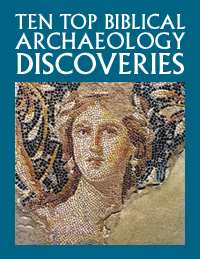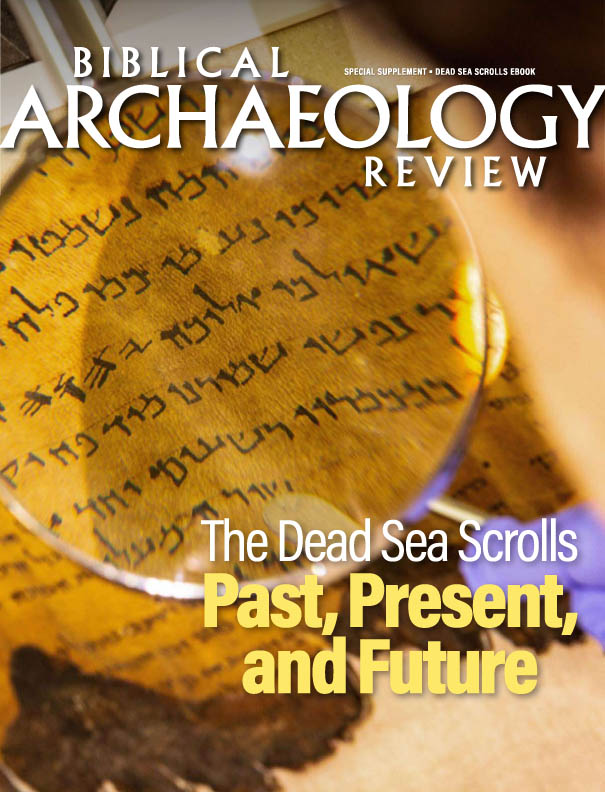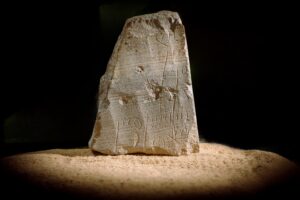What were the top ten biblical archaeology stories of 2023? As the year winds down, we look back at some of the most popular news stories published on Bible History Daily in 2023. From uncovering Jerusalem’s ancient architecture to an early papyrus of Jesus’s sayings to the discovery of several ancient languages, this year provided some incredible archaeological news. The articles below are not listed or ranked in any particular order, though readers are welcome to share their top picks in the comments section below.
Top Ten Biblical Archaeology Stories
Jerusalem’s architecture: 2023 brought a lot of news about ancient Jerusalem, including continued excavations of the Holy Sepulchre (see photo at right), the discovery of the city’s Iron Age moat, mysterious ancient channels, and the discovery of the city’s Second Temple period aqueduct. Plus, we also saw new evidence and proposals for the locations of two of the city’s most important ancient monuments: the biblical Millo and the Seleucid Acra of Hannukah fame.
![]()
Archaeological Evidence of Solomon and Sheba?: Speaking of Jerusalem, 2023 provided possible evidence of a link between the kingdoms of Judah and Saba (biblical Sheba) during the time of Solomon. Reexamining an old ostracon discovered in Jerusalem, one scholar has suggested that its inscription may be written in Sabaic, one of the languages of ancient South Arabia. Dated to the tenth century BCE, this inscription would provide the earliest evidence of international trade between Judah and South Arabia, though many scholars remain unconvinced.
![]()
Second Temple Period Receipt Found in the City of David: Continuing the Jerusalem theme, a fragmentary inscription dating to the first century CE was discovered during a salvage excavation of a tunnel in the City of David. Seemingly a business receipt, the inscription provides additional evidence for the economic importance of the City of David area during the time of the Romans.
![]()
An Early “Sayings of Jesus” Text: One of the most fascinating stories of 2023 was the translation of a fragmentary second-century papyrus that contains sayings of Jesus. The sayings are very similar to sayings found in the Gospels of Matthew and Luke as well as the non-canonical Gospel of Thomas. Excavated in Oxyrhynchus, Egypt, the papyrus is one of the oldest known collections of Jesus sayings.
![]()

CC BY 4.0, via Wikimedia Commons.
The Race to Read the Herculaneum Scrolls: In early 2023, a group of researchers and investors announced they were offering a million-dollar prize to the first team able to read the famous Herculaneum scrolls, a collection of more than 1,800 charred documents buried during the eruption of Mt. Vesuvius in 79 CE. While no one is certain what the Herculaneum scrolls contain, scholars suggest the massive corpus may contain works of stoic philosophy, ancient history, or even references to the earliest Christians. The competition has already given out some of its early prizes to several college students who built artificial intelligence (AI) programs that successfully made out a few words from the scrolls.
![]()
Excavating Pompeii’s Middle Class: Another great find from the ruins of Mt. Vesuvius was the discovery of a fully furnished home in Pompeii. This newly excavated home offers a rare glimpse into Pompeii’s middle-class residents, the lives they led, and the ones they aspired to.
![]()
An Early Israelite Curse Inscription from Mt. Ebal?: 2023 also offered more news on the Mt. Ebal curse tablet. In May, the research team finally published their academic article on the object, which they claim is one of the most important inscriptions ever found in Israel. Other scholars, however, were quick to come out against the team’s conclusions. Some even suggested the “tablet” is more likely just a simple Bronze Age fishing weight and contains no writing at all.
![]()
Complete Book of the Dead Discovered at Saqqara: Excavating at the site of Saqqara south of Cairo, an Egyptian team made an impressive discovery: a complete copy of the ancient Egyptian Book of the Dead. Measuring an impressive 52 feet long, the papyrus was discovered in the tomb of a wealthy Egyptian named Ahmose who lived around 300 BCE. Yet another amazing Egyptian discovery was a hidden corridor inside the Pyramid of Khufu in Giza, identified using the latest digital scanning technologies.
![]()
Hittite Cult Center Uncovered in Turkey: Meanwhile, archaeologists in Turkey announced the discovery of Zippalanda, one of the most important cult centers of the Hittite Empire. Especially significant was the discovery of several monumental public buildings, including a large Hittite temple and a unique circular structure that may relate to worship of the city’s ancient and widely revered storm god.
![]()
Ancient Amorite Language Discovered: Finally, one of the most intriguing discoveries of 2023 was two tablets containing a bilingual inscription written in both Sumerian and Amorite. Although much is known about the ancient Amorites, including King Hammurabi and his famous law code, scholars knew little about the Amorite language until the discovery of the new tablets, which provided lists of common Amorite words and phrases. Amorite was not the only ancient language discovered in 2023, however, as a previously unknown Indo-European language was discovered on a tablet found at Hattusa, the capital of the Hittite Empire.
![]()
So, what archaeological news do you think was the most impactful in 2023? Leave a comment to let us know, and if you are looking for your own chance to excavate history, be sure to check out the BAS Find a Dig page to learn how you can get involved.
Read more in Bible History Daily:
Get a FREE eBook today:


The post Top Ten Biblical Archaeology Stories of 2023 appeared first on Biblical Archaeology Society.











0 Commentaires